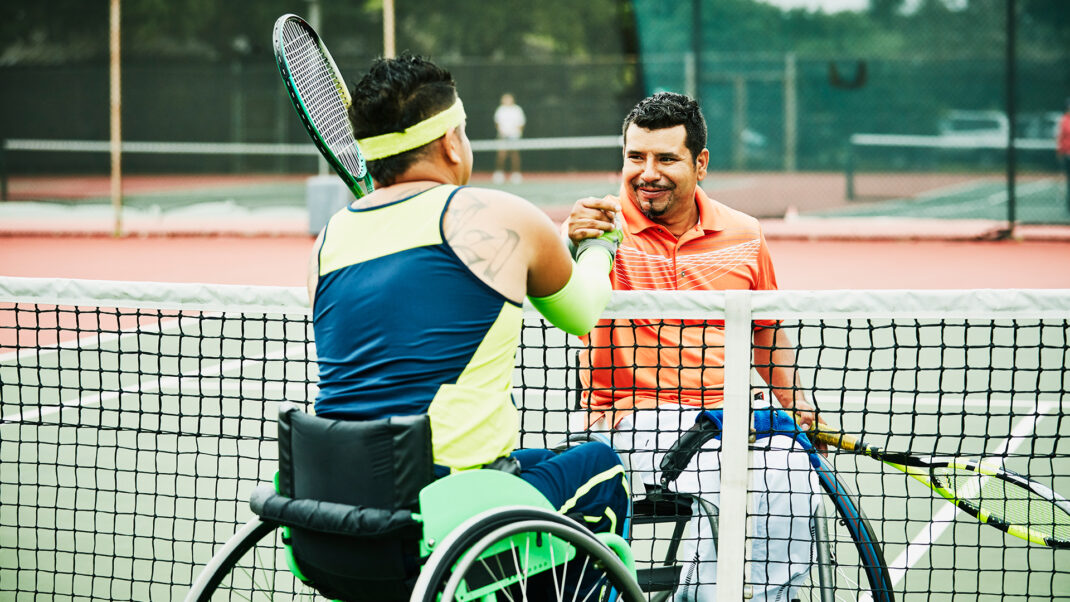From Postrehabilitation to Play
Help clients make a successful transition from "walking wounded" to functional.
It’s rare to come across a client who has not had some kind of injury. No matter how thoroughly you screen, more often than not a client remembers an old injury after the fact. The population once thought of as “normal healthy individuals” are in fact “walking wounded” and appearing at our doors in droves. They are looking for someone to help them regain their fitness, function and performance.
This scenario presents a rewarding, potentially lucrative business opportunity for you, the qualified personal fitness trainer. Do you want to turn your walking-wounded clients back into functioning individuals? Read on to find out how to establish a “Postrehab to Play” business model and help clients journey back to health with a progressive exercise protocol.
Postrehabilitation Network and Infrastructure
No matter how well trained you might be in postrehabilitation and exercise science, no matter how many certifications you have or seminars you’ve attended, unless you are a medical professional you do not have the qualifications or expertise to diagnose or “treat” injuries. It is imperative that you always work within your scope of practice as a fitness professional.
(For more information, read IDEA’s Medical Opinion Statement in the member-only section of www.ideafit.com.)
With scope of practice firmly in mind, you can start working on your postrehab infrastructure—a network that should include at least three of the following: a physician, a massage therapist, a physical therapist, a chiropractor. The size of your client base will determine how many of each type of professional your network needs. Start with the minimum, and grow as your client base grows. There may be times when it is beneficial to have more than one physical therapist, physician, etc. For example, one physical therapist might specialize in pelvic alignment, another in the shoulder complex or the foot. Networking with both will enable you to better meet clients’ specific needs.
Once you have established your network, be sure to make contact before you hand out cards. Whether you personally know the allied health professional or not, write a letter outlining your intentions, training experience, education and other credentials. You might want to include a brief (half-page) resumé and a one-paragraph biography for reference. It’s also a good idea to include a comment regarding your scope-of-practice limitations. Follow up with a telephone call after a week to 10 days. Since medical professionals (especially physicians) are extremely busy, you may have to book an appointment to speak with them. This could require an outlay of cash, but it will be well worth it in the long run.
One simple yet professional way to introduce yourself is by referring an existing client via a phone call or a letter. The medical professional will not only appreciate the business; he will also recognize that you had the foresight to see when a problem was beyond your expertise. As a result he will be more likely to pass the client back to you with a medical release and suggestions for follow-up exercises. This networking technique is a win-win situation as it not only introduces you to the medical professional and vice versa, but you also end up with a new repertoire of exercises for your client’s needs. The downside is that you create your network piecemeal versus all at once.
The most efficient way to network with the medical community is to volunteer your services at a sports medicine conference or sporting event. Have your introductory package (letter, resumé, references, credentials, a couple of business cards, etc.) ready to hand out. This way you will introduce yourself, follow up, meet new contacts and establish relationships all at the same time.
Progressive Exercise Protocol
You have your clients and a network of allied health professionals. Now what? In the beginning, base client guidelines on the referring medical professional’s recommendations. Once your client has progressed successfully beyond this phase, you’ll combine your knowledge of strength and conditioning principles (with input from the referring professional) to progress to more challenging activities. To determine client readiness for the exercises and movements you have in mind, an assessment is in order.
A valid, reliable assessment tool should be the first thing you pull out of your personal fitness trainer toolbox. How do you know where to direct your client if you don’t know where she’s come from? In the past, you may have tested isolated strength (grip strength), flexibility (sit and reach), cardiovascular fitness and muscular endurance (timed push-ups and sit-ups). While these tests are valid and reliable, they do little to measure neuromuscular function, movement or performance. If you want to take your client from postrehab to play, then you must use more functional assessment techniques that test movement patterns similar to those used in real activities (e.g., lunges, single-leg quarter squats, etc.). See the sidebar “Movement-Oriented Assessment” for more details.
Exercise Selection
Combine the results of your assessment with the medical professional’s guidelines to develop a sound routine. Think of strengthening movement patterns rather than individual muscles. Once your client has established a proper movement pattern, you can begin to add more resistance, instability, movement complexity and reactivity. It is better to progress the initial postrehab exercise from its more rudimentary pattern through to a more integrated, multiplanar, multijoint, total body or “core-dinated” approach, than to introduce a completely different exercise at each level of progression. See the sidebar “Proper Progression” on page 39 for a closer look at this concept.
Professional Tools
It takes more than know-how and determination to create a successful postrehabilitation business model. You need to build a symbiotic bridge to the medical community that will serve as a strong networking system. Once you have a team in place, you must use your own expertise to properly progress and regress clients so that their days on the “disabled list” become a distant memory. With these professional tenets as building blocks, your business and reputation will grow as it becomes obvious that you have your clients’ best interests in mind.
This chart illustrates how to progress one specific exercise from its rudimentary form to a more complex multifaceted movement sequence. Remember that these phases are not distinct entities, but rather form a continuum, with perfect form as the guide for progression. As soon as the movement sequence breaks down, stop, rest and regress if necessary.
This section of the article is still in the process of conversion to the web.
This chart illustrates an exercise scenario pertinent to particular types of movement, from which you can extrapolate to suit the specific needs of your clients. The base exercise and progression to fitness and function can be identical to that illustrated in the sidebar “Proper Progression.” These examples are suggestions only.
When analyzing movement patterns, think of the pattern, not the individual muscles. View the body as an orchestra: The muscles are instruments and work in concert with one another to produce harmonious movement. If individual muscles worked separately, it would be like an orchestra playing one instrument, one note at a time. The result would certainly not be harmonious! The following sample test helps determine a client’s ability to support single-leg stance during multidirectional movement patterns.
Multidirectional Single-Leg Squat
- Make a star on the floor using masking tape.
- Ask client to stand on one leg, centering the foot over the center of the star. Check posture and ability to balance.
- Stand in front of client, directing her to perform quarter squats. With each quarter squat, direct her to bring “free” leg forward, back, side, angle front, angle back.
- Watch from all sides.
- Note medial drift of knee on stance leg.
*Possible reason: dysfunctional hip stabilization.
* For educational purposes and clarity, I have chosen dysfunctional hip stabilization and given one of many possible protocols. To list every possible reason for medial drift is beyond the scope of this example
Exercise Protocol
Single-Leg Reactive Neuromuscular Training (RNT) quarter squat.
Using elastic resistance, pull the client into her imbalance. Emphasizing the error increases the neural upload to the dysfunctional muscles (a neural “wake-up call”) so she may elicit the correct response, which is to control the direction of the thigh during hip, knee and ankle flexion.
References
Cook, G. 2003. Athletic Body in Balance. Champaign, IL: Human Kinetics.
Cook, G. & Fields, K. 1997. Functional Training for the Torso. Journal of Strength and Conditioning, 19 (2), 14–19.
Erickson, T. 2005. The benefits of strength training for endurance athletes. NSCA’s Performance Training Journal, 4 (2), 13–18.
Radcliffe, J. 2004. “Introduction to Plyometrics.” Plyometrics and Speed Development Symposium, National Strength and Conditioning Association, Colorado Springs, CO.
Reebok Core Training Systems. 2004. “Reebok Functional Movement Screen.” Montreal, Quebec.





